Meet the Team
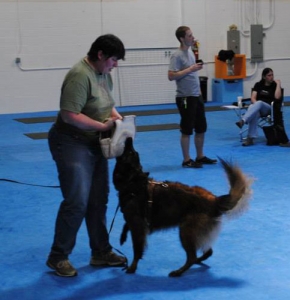
Kate Hogan, Ph.D
Yes, sometimes they even call me “Dr. Hogan” at work, but not often! I have a Ph.D. in Pharmacology and the title of my dissertation is too long to fit on a single line. What that really means is that I’m intellectually curious and persistent – perfect qualities for this project! 😆 I’ve admired Belgian Shepherds from afar for many years and got my first in 1999, a Groenendael named Tiago. I now have 3 working line Tervuerens – Gata, Tor (officially a Malinois, but really a Terv – his Embark profile confirms it!) and Nina. I really prefer the working lines and try to train and compete in the protection sports, when life doesn’t interfere with my plans.
Location: Near Washington, DC USA
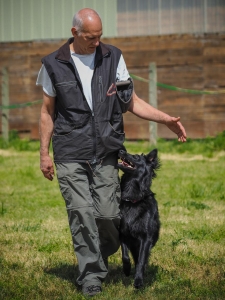
Dave Vesely, MS
I’m a semi-retired ecologist who spent most of his career planning conservation projects for wildlife in Oregon. During my work, I came to understand the perils of inbreeding and small population sizes to the viability of a species. As I became interested in breeding dogs, I was naturally inclined to the scientific research on the subject. The more I read about the consequences of customary breeding practices such as close line breeding
** Read More **
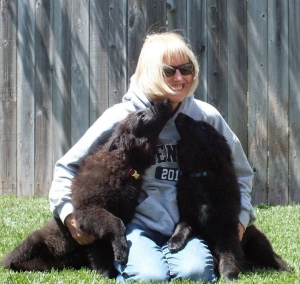
Lorra Miller
I started in dog sports, conformation and obedience, in 1973 with a Doberman Pinscher. In 1977 I purchased my first Belgian who went on be Ch Brenna v Siegestor UDT ROM. I started going to US National Specialties in 1979 and have been to all but 4 specialties in the years since. I was show chair of the 2018 National where all US Belgian clubs participated. I’ve attended nationals in France, Netherlands and Sweden. I started breeding under the Isengard prefix in 1979 and have bred or owned over 60 show champions including several National Specialty winners, top winning agility, obedience and herding Belgian Sheepdogs.
** Read More **
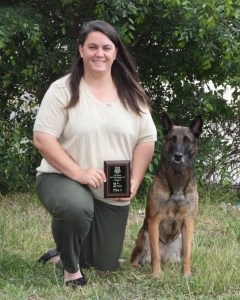
Kadi Thingvall
I initially jumped into the world of genetics when I was a kid involved in 4H, breeding and showing Rex and New Zealand White rabbits. While the NZW color genetics were very straight forward, Rex come in a wide variety of colors and patterns and both breeds required some basic genetics knowledge when breeding for meat production, structure, litter size, etc.
I purchased my first Belgian Malinois in 1993 and have owned, trained, and bred them ever since under the kennel name Dantero. ** Read More **

Edrie Greer, PhD
This project perfectly melds my intense interests in dogs, education, and science.
My first dog was a rough collie (thanks to Lassie), and later we welcomed a “hybrid” German Shepherd who looked a lot like a Malinois! From there it wasn’t too difficult to make the connection to the Belgian breeds (“Is that a cross between a collie and a GSD?” I am always asked about my Tervurens.)
** Read More **
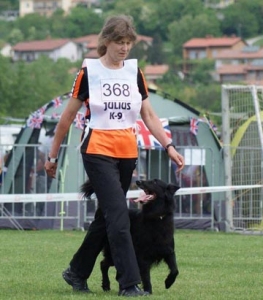
Thea van Niekerk
I finished my masters in animal science in 1988 and have been working as a researcher specialized in poultry welfare ever since. My work is now located at the University Campus of Wageningen, the Netherlands.
My parents did not particularly like dogs, so we never had one when I was little. But I always wanted a dog. One day I saw a Groenendael, and I knew that would be the breed for me. Finally, in 1988 the time seemed right, I bought one and 9 month later a second.
** Read More **
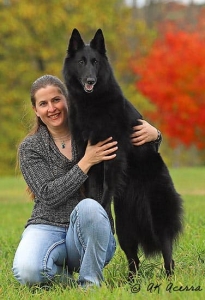
Cathy Sheeter
My interest in genetics was started fairly early on (age 10) when a litter of Angora rabbits I bred ended up with some unexpected colors. In college I majored in animal sciences and took every genetics class offered, and acted as a TA for an advanced genetics class my senior year.
** Read More **
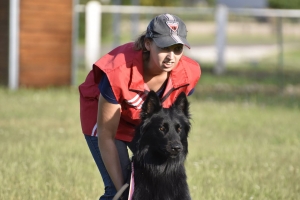
Nadine Stemmelin
I first discovered the Belgian Shepherd Groenendael about 10 years ago, when I got Endjy, a show line male. My vet thought I must be crazy for getting a Belgian Shepherd as my first dog!
Endjy didn’t have a very good start in life. He was very fearful of humans and aggressive with dogs. I took him to a training club and discovered some new sports. With the help of Tibor (IPO3 finalist with Victor van de Duvetorre, Laekenois) - my coach and mentor - we competed in IPO anFH. All the while I was learning, asking questions, always digging into the breed of Belgian Shepherd. I learned about the diseases which affect this magnificent breed as well as the existence of working lines.
** Read More **
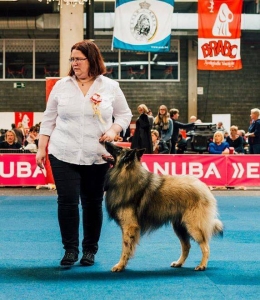
Saskia Vermeylen
I have been raised with dogs from the day I was born. During my youth, I grew up with German Shepherds (both show and working line). When I saw my first tervueren, Irak du Domaine Ponti, I knew that this was my breed. I had to wait for 10 more years before I got my first tervueren Yentos of the Two, in 1999. I currently have 2 boys from completely different lines and types. Although I am a show judge, all my dogs also train and compete in several sport/work activities as I find a complete dog important.
** Read More **
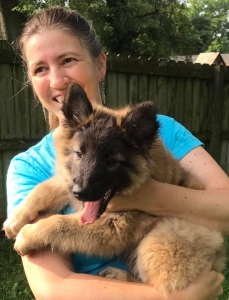
Elizabeth Hlavaty
My introduction to Belgian Shepherds (and dogs in general) was in 2005 when I obtained my first Belgian Tervuren puppy. I had spent a year researching different breeds and meeting people with tervuren before deciding that was the breed for me, but I knew very little beyond that and of course, there is so much more to learn! I managed to enroll in a couple puppy classes with my terv boy, and that was the extent of our training. Even so, he was a stellar companion and a great running partner.
** Read More **

Ellen Piepers-Janse
Although I grew up with and have been fascinated by animals and in particular dogs for all my life, for some reason it took many years before I had the opportunity to have my first own dog: a rescue dog, mix of unknown origin but with an insatiable search drive. Years later, the Belgian Shepherd entered my life: my sister started breeding Laekenois, and my husband introduced me to the different branches of KNPV sport and the wide variety of papered and unpapered Malinois. My first female was a "fluffy" registered as Malinois, my second a niece of hers and our third a male we kept out of the litter we had.
** Read More **
More Team Members coming soon!

